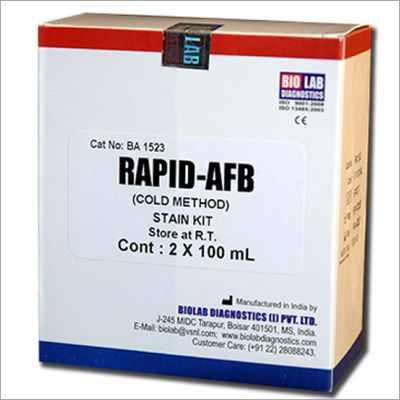Call : 08045813979
Call : 08045813979
Crystal Violet
98.00 - 168.00 INR/Box
Product Details:
- Other Names Basic Violet 3, Gentian Violet, Hexamethylpararosaniline chloride, Methyl Violet 10B
- HS Code 3822
- Molecular Formula NA
- Shelf Life 24 Months
- Boiling point NA
- Melting Point NA
- Structural Formula NA
- Click to View more
X
Crystal Violet Price And Quantity
- 98.00 - 168.00 INR/Box
- 1000 Piece
Crystal Violet Product Specifications
- 24 Months
- NA
- NA
- 3822
- NA
- Basic Violet 3, Gentian Violet, Hexamethylpararosaniline chloride, Methyl Violet 10B
- BLUE
- NA
- NA
- NA
- Other
- MICROBIOLOGICAL STAIN
Crystal Violet Trade Information
- EX WORK - CST MUMBAI AIR PORT, NHAVA SHEVA SEA PORT
- 5000 Piece Per Week
- 4-12 Days
- Yes
- If order is confirmed we will reimburse the sample cost
- 100 mL bottle in a kit 200 Bottles in Single carton Carton size: 15 x 15 x 14 " GROSS weight: 32 Kg Approx
- All India
- CE, FDA-GMP, FDA-GLP, ISO9001:2015, ISO13485:2016, NSIC
Product Description
Crystal violet is a synthetic dye that is commonly used as a biological stain in microbiology and histology. It is a purple-colored, water-soluble dye that can be used to stain bacterial cells, fungal cells, and some types of animal cells for microscopy and other laboratory techniques. Crystal violet works by binding to the cell wall and other structures within the cell, making them visible under the microscope. It is commonly used in the Gram staining procedure, a standard laboratory test used to differentiate bacterial species based on their cell wall composition. Crystal violet is also used in other laboratory techniques, such as in the staining of tissue samples for microscopic examination.
In addition to its use as a biological stain, crystal violet has also been used as a disinfectant and as a dye in the textile and paper industries. However, its use as a disinfectant has been limited due to its potential toxicity and the development of more effective disinfectants. While crystal violet is generally considered safe to use in laboratory settings, it is important to handle it with care and to follow appropriate safety precautions to minimize the risk of exposure or contamination.
Enter Buying Requirement Details
Other Products in 'Bacteriology Stains and Reagents' category
"We are mainly looking for Bulk Order Inquiries"
 |
BIO LAB DIAGNOSTICS INDIA PRIVATE LIMITED
All Rights Reserved.(Terms of Use) Developed and Managed by Infocom Network Private Limited. |

 Send Inquiry
Send Inquiry English
English Spanish
Spanish French
French German
German Italian
Italian Chinese (Simplified)
Chinese (Simplified) Japanese
Japanese Korean
Korean Arabic
Arabic Portuguese
Portuguese
